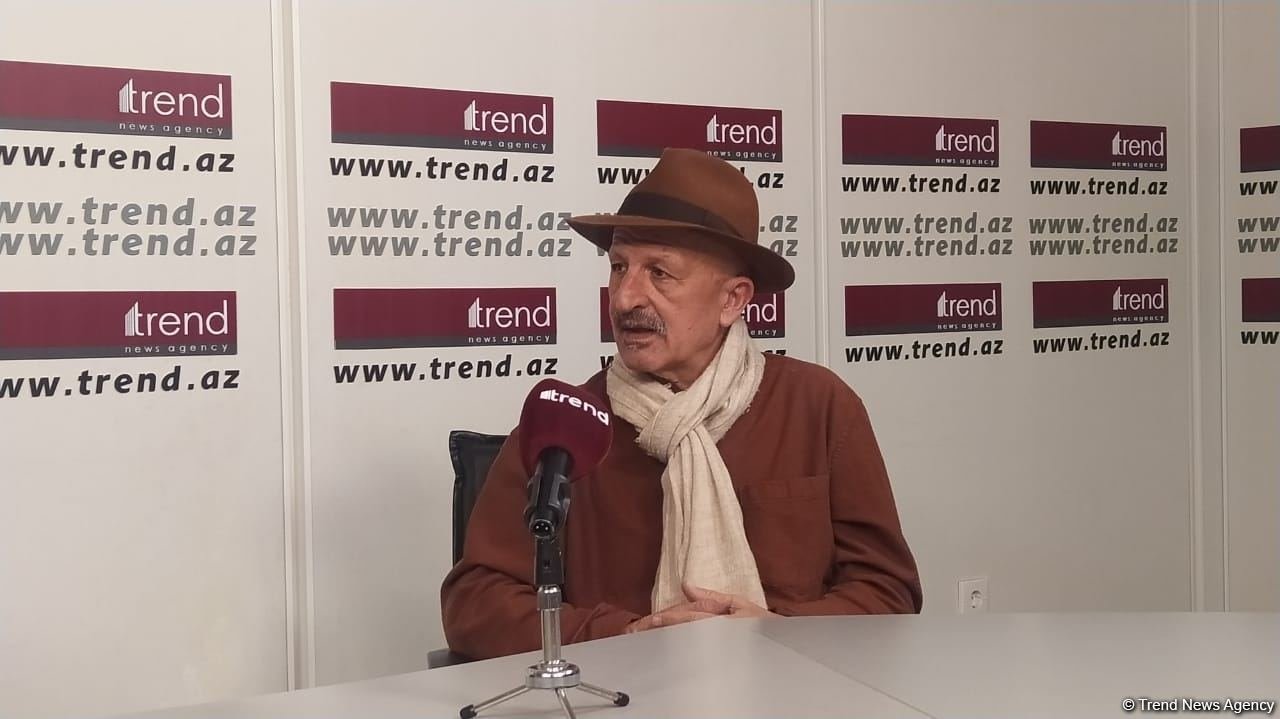

The Armenian serviceman took a teaspoon out of his pocket, showed it and said that the eyes of the Azerbaijani people were gouged out with it, World-famous photographer Reza Deghati said in an interview with Trend while sharing his memories about the Khojaly genocide.
“In fact, I have seen and photographed wars and tragedies around the world for more than 40 years,” Deghati said. “I heard about Azerbaijan’s Khojaly tragedy on February 27 and arrived in Azerbaijan within several days. I met with four health workers of the French humanitarian organizations at the then Intourist Hotel in Baku.”
The world-famous photographer added that the representatives of these organizations said that the Armenian people were in a difficult situation in Khankandi city and that they were carrying medicines to help them.
“I told them that a tragedy had been actually committed against the Azerbaijani people and we went together to Aghdam district,” Deghati said.
“I met with National Hero of Azerbaijan Allahverdi Baghirov in front of the executive power building in Aghdam,” the photographer said. “I noticed that Baghirov was pure-hearted and courageous. I told them that the representatives of the French humanitarian organizations wanted to go to Khankandi and Baghirov said that he would help.”
“That time, numerous people gathered in front of the Aghdam executive power building,” the world-famous photographer said. “I found out that they arrived from Khojaly and that most of them gathered behind the Aghdam mosque.”
Deghati learned about the scale of the tragedy.
“Khojaly residents said that atrocities were committed against humanity,” the world-famous photographer added. “It was really hard to believe that a person could commit such atrocity. More than 100 people gathered in front of the morgue to which Khojaly people’s bodies were brought.”
Deghati said that the bodies were brought by the representatives of the International Committee of the Red Cross.
“I saw that those people were severely tortured,” the photographer added. “I also called the representatives of the French humanitarian organizations to come with me and informed them about the incident. We were told that there were many wounded in the hospital and the French health workers began treating them.”
The photographer added that Baghirov informed him about exchanging a group of Armenian and Azerbaijani detainees and asked him to speak French during the exchange of detainees because there were a lot of French-speaking Armenian servicemen.
“When the detainees were exchanged, an Armenian serviceman, who was a French citizen, said that a lot of French servicemen were fighting there,” Deghati said. “That Armenian serviceman asked me why I took photos of the Azerbaijanis and said that it was dangerous.”
“A drunken Armenian serviceman who was near him took a teaspoon out of his pocket and showed it to me,” Deghati said. “The Armenian serviceman, who speaks French, clarified that when they see Azerbaijani people, they gouge out their eyes with a teaspoon. When the detainees were exchanged, I saw that the Azerbaijani detainees were severely tortured while the Armenian detainees did not look like detainees at all. All this is obvious in the photos.”
The photographer added that seven bodies were brought during one day.
“People were looking for their relatives there,” Deghati said. “An elderly woman lost her husband and son at night during that tragedy. Every time when the bodies were brought, she went to look for them. One day, the elderly woman shouted that "I found them, but they have no eyes". I immediately recalled the spoon shown by the Armenian serviceman. I went there and saw that those individuals had no eyes. The doctors said that those individuals were alive when their eyes were gouged out and then they were frozen to death.”
The photographer spoke about his plans to report the Khojaly tragedy.
"A number of journalists and photographers reported about the Khojaly tragedy,” Deghati said. “After seeing this tragedy, I had a sense of responsibility to tell the world about the atrocities committed against the victims and convey their words.”
“I have been conveying this truth to the world since 1992, mainly in France (as is known, there are many Armenian people in France and pressure was exerted on me when I hold a conference or organize an exhibition on Khojaly tragedy) because I feel this responsibility,” Deghati said. “I am currently creating a new website called ‘Khojaly Witness’.”
“I collect my own materials and photos of other film directors, journalists and photographers on this website for it to be an important source of information about the Khojaly genocide,” the photographer said. “Moreover, I have prepared three books together with ADA University. These books will be published in about a month.”
“I stayed several days in Azerbaijan after the second Armenia-Azerbaijan Karabakh war,” the photographer said. “The reason is to convey to the world the vandalism committed by Armenia in the Karabakh region for 30 years. For about a year I have been taking photos of Armenia’s so-called "protection" of Karabakh region and the way of their living there."
Deghati said that besides the website about the Khojaly tragedy, he has developed another website.
“This website is about all the events related to Karabakh since 1992,” the photographer said.
“The most important thing for me is the restoration of the Karabakh region,” Deghati said. “I have already started taking the corresponding photos. I would like to show to the world that one group was just engaged in sabotage, was destructing and devastating everything in Karabakh during 30 years.”
“But now another group has been restoring everything for two years,” Deghati said. "Let the world see which of these two groups is the real owner of these lands. The young servicemen sacrificed their lives for these lands and real owners of these lands are now reviving them.”